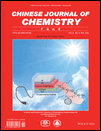Thickness Uniformity Adjustment of Inkjet Printed Light-emitting Polymer Films by Solvent Mixture
Abstract
In this paper, thickness uniformity of poly(9,9-di-n-octylfluorene) films patterned by inkjet printing was improved by the use of solvent mixtures (a solvent with higher volatility, higher surface energy and lower viscosity, with another solvent with lower volatility, lower surface energy and higher viscosity). The average thickness of inkjet printed poly(9,9-di-n-octylfluorene) films was increased from ca. 30 nm to ca. 100 nm when solvent mixtures were used instead of pure chlorobenzene. More flat PFO films were formed instead of the original films with concave-lens like cross-section formed by coffee ring effect. This improvement was explained by combination of intense Marangoni flow at early drying process and weak complementary flow at the later drying process formed in the solvent mixture. Patterned poly(9,9-di-n-octylfluorene) films were used for fabrication of electroluminescence devices with improved electronic property. Array of pixels with about 80% effective light-emitting area was obtained.




